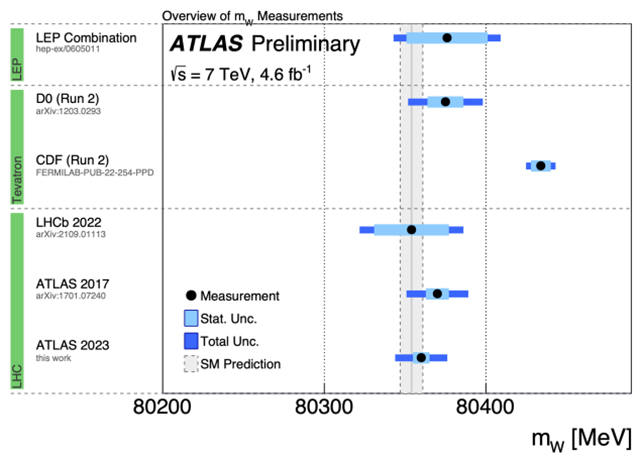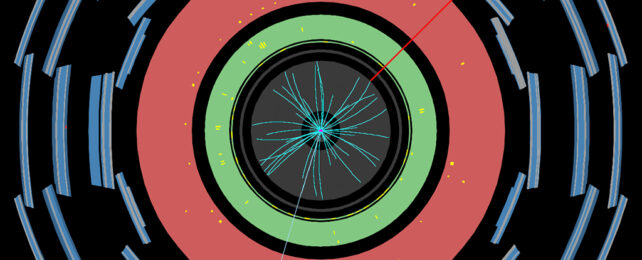Last year a new finding in particle physics stunned scientists: a fundamental particle responsible for one of the Universe's four fundamental forces was heavier than predicted.
The discovery of a discrepancy between the W boson's theorized and experimental masses promised new insights beyond the Standard Model, the theoretical blueprint that describes how matter behaves.
Now scientists have run the same numbers again using an updated technique, this time discovering the particle's mass is a close fit with the Standard Model's predictions after all.
While this means we may not need a revolutionary rethink of our current theory of particle physics, we can't but help be a little disappointed. The Standard Model of particle physics remains a hypothetical interpretation of the Universe around us, but so far it has held up well to the battery of tests that we've managed to put it through. At the same time we know there are unexplained gaps: the Standard Model doesn't account for dark matter, for example, or even gravity.
While the W boson can't be directly measured, the mass and energy released as it decays can. Putting the pieces back together requires a considered approach, and a solid starting-point for knowing how collided particles hold together.
The latest research reanalyzed 2011 data from the ATLAS experiment at the Large Hadron Collider (LHC) at CERN in Switzerland, using a revised statistical approach based on improved understanding of the processes.

The researchers say their new reading is 16 percent more precise than previously and with a lower level of uncertainty, calling the 2022 results from the now closed Tevatron collider in the US state of Illinois into question.
"While the understanding of the detector as well as the effects of contributions from electroweak and top quark background processes have not changed, significant progress has been made in the statistical framework on the extraction of the W boson mass from the data," write the researchers.
For this new research, the team concentrated on particle collision events where the W boson breaks down into lighter particles: electrons, muons, and neutrinos. Additional data collected in 2017 helped validate the findings.
The Tevatron measurement came out at 80.4335 gigaelectronvolts, a seemingly small but significant difference to the 80.357 gigaelectronvolts predicted by the Standard Model. The latest W boson mass measurement is 80.360 gigaelectronvolts, bringing it far closer to the theoretically predicted mass.
As a class of particles, gauge bosons like the W boson essentially facilitate interactions between other fundamental particles. Together with the Z boson, the W boson is crucial in processes such as radioactive decay and nuclear fusion.
"Due to an undetected neutrino in the particle's decay, the W mass measurement is among the most challenging precision measurements performed at hadron colliders," says particle physicist Andreas Hoecker from the ATLAS team at the CERN lab.
"It requires extremely accurate calibration of the measured particle energies and momenta, and a careful assessment and excellent control of modelling uncertainties."
It's worth bearing in mind that this is only a preliminary finding right now. Further tests are now underway on more recent data. If it turns out that the Standard Model has got the W boson mass wrong, that would hint at some as-yet-undiscovered particles and forces at play. For now though, it seems the reputation of this fundamental hypothesis is safe.
"This updated result from ATLAS provides a stringent test, and confirms the consistency of our theoretical understanding of electroweak interactions," says Hoecker.
You can read a paper detailing the new findings on the CERN website.
